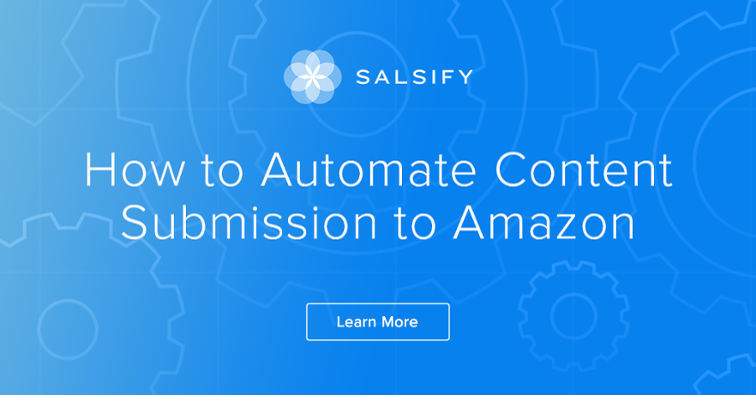Wondering about the benefits of Amazon’s third-party selling? As a current 1P seller, 3P selling on Amazon Marketplace looks like an enticingly simpler way to move through product—one that offers more control over pricing, your brand’s exposure, margins, and even how frequently you’re paid.
Amazon says more than 40% of their unit sales come from companies and brands selling 3P. Additionally, Amazon Prime Day 2018, saw over $1 billion made by Marketplace sellers. That's a compelling opportunity. But before you make the leap, here are some of the most common questions answered.
What’s the difference between selling 1P and 3P?
If you currently sell 1P, you know your brand is viewed as a wholesaler and products are uploaded directly to Amazon through the Vendor Central interface. From the consumer perspective, products appear to be sold by Amazon.
For 3P, brands upload their products through the Seller Central and sell directly to the consumer through the Marketplace. Amazon is the exposure platform, but not the retailer. In this case, consumers recognize they are buying from the brand or another 3P source.
What are the benefits of selling 3P?
Control. Amazon allows for brands to be more hands-on when selling 3P. As opposed to 1P – where Amazon manages the price and exposure and frequently makes changes without consulting the brand – 3P sellers make the final call on their assortment, inventory counts, pricing, MAP adherence, and margin. With 3P, Amazon also provides basic analytics and seller support.
What are the downsides of selling 3P?
As for downsides to 3P, the provided analytics are not as in-depth as 1P, inventory volume is smaller, A+ content is generally unavailable, and brand awareness or reputability can take a hit when consumers perceive products are not fully supported (read: distributed) by Amazon. The distrust can also be compounded when Amazon is not able to assist with customer service and the brand must manage all complaints and damage control. But there are ways around this (see shipping below).
What factors should brands consider before selling 3P?
If you are considering selling as a 3P or taking on a hybrid approach, in which some SKUs are listed as 3P and some as 1P, there are three things you must know about before making your decision.
There are different options for listing your products
According to Amazon, 3P sellers can list products under 20-plus categories, some of which require special permission to access. 1P are permitted to sell in over 30 categories. From there, 3P sellers can list products two ways. Is the product already on Amazon? 3P sellers can simply duplicate the listing, which effectively creates multiple listings of the same product. If the item is new to Amazon, 3P sellers can add details from scratch.
Average fees are less for 3P brands
On the Marketplace, there are two ways Amazon collects fees. If your brand plans to sell more than 40 items a month, your brand will be viewed as ‘professional’ and the cost will be a monthly fee of $39.99 plus other selling fees that range between 8%-20%. If your plan is to sell less than 40 items, your brand will be viewed as ‘individual’ and the cost is $0.99 per sale plus the other selling percentages. These are both less expensive than the 1P seller fees. On top of cost savings, 3P sellers are typically paid within 14 days, which is often significantly faster than 1P.
Shipping decisions and costs are the responsibility of 3P sellers
3P sellers have the option to fulfill the items on their own or use Amazon’s resources. When brands use their own methods of shipping, Amazon alerts sellers to the sale, calculates the shipping costs, and adds those costs to the sale price paid by the consumer.
When sellers use Fulfillment by Amazon (FBA), Amazon’s vast network and infrastructure enables 3P sellers to store products in the Amazon fulfillment centers and ship from there. The packing, shipping, returns, and customer service are all completed by Amazon.
Of course, there is a pay-as-you-go fee for this service, as well as shipping costs to the Amazon warehouse and storage fees once there. That said, postage pricing is competitive and there is no upcharge to take advantage of Amazon Prime FREE Two-Day Shipping and FREE Shipping.
Another definite perk to FBA is that Amazon allows Multi-Channel Fulfillment, where they will fulfill orders placed on your other channels with a single-source operation. And either way your brand chooses to ship, you have – at the minimum – access to international consumers in Mexico and Canada.
Written by: Salsify
Salsify drives results for customers worldwide, empowering them to win on the digital shelf.
Recent Posts
Summit Spotlight: Salsify Leaders Share How To Advance to the Next Decade of the Digital Shelf
Omnichannel Strategy: Here Are the Top 3 Drivers of Omnichannel Profitability
Digital-Influenced Retail Will Describe 70% of U.S. Sales by 2027 — What Does This Mean for Brands?
Subscribe to the Below the Fold Newsletter
Standing out on the digital shelf starts with access to the latest industry content. Subscribe to Below the Fold, our monthly content newsletter, and join other commerce leaders.



